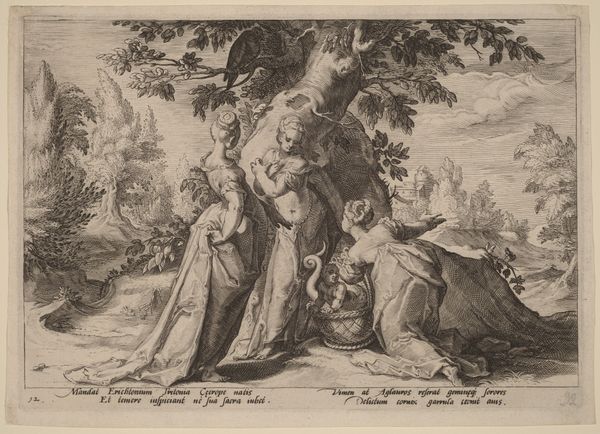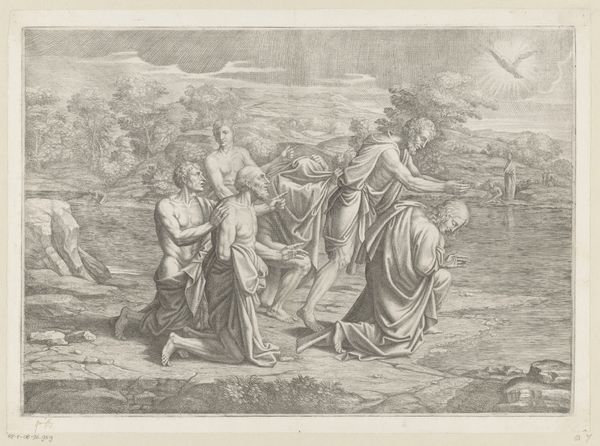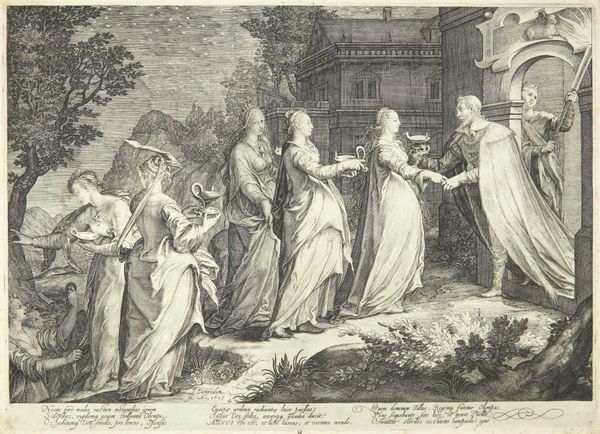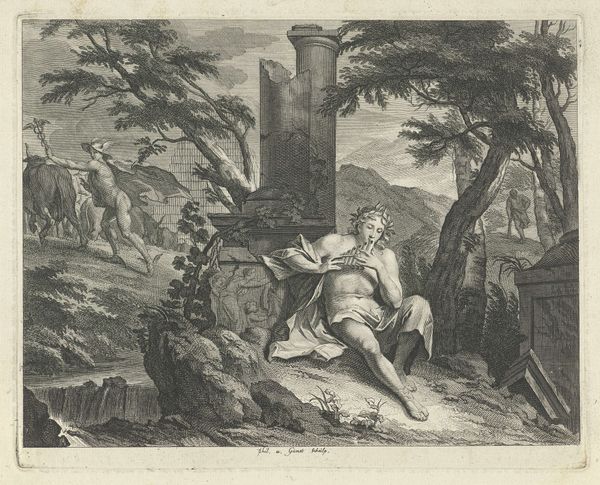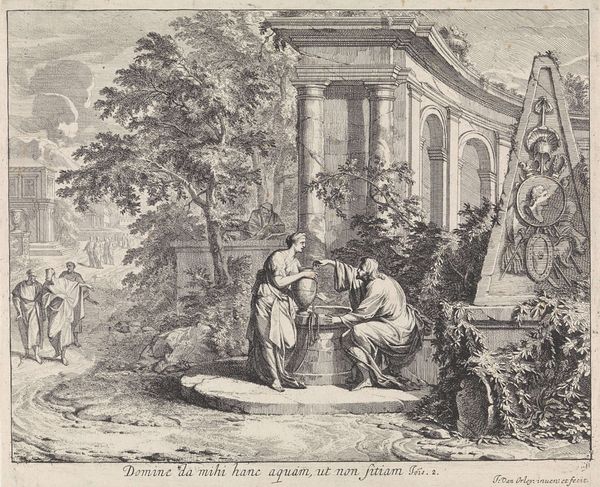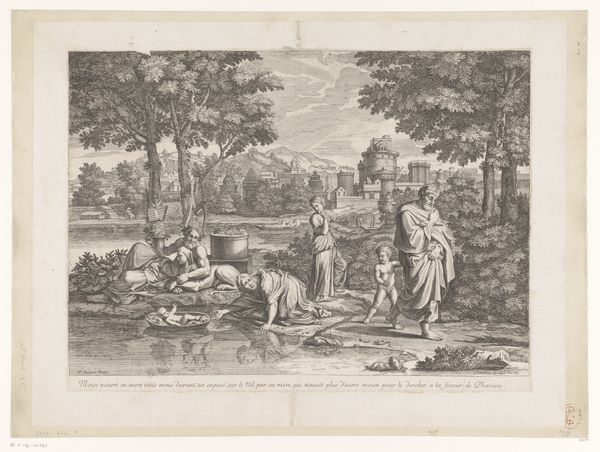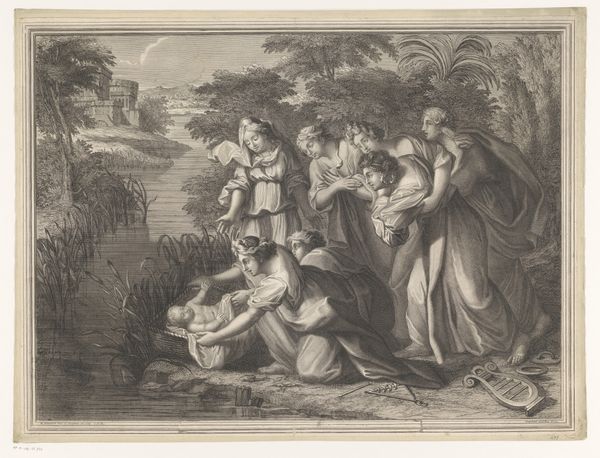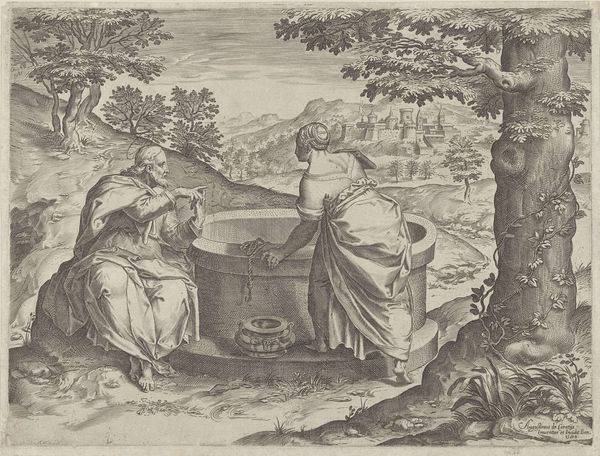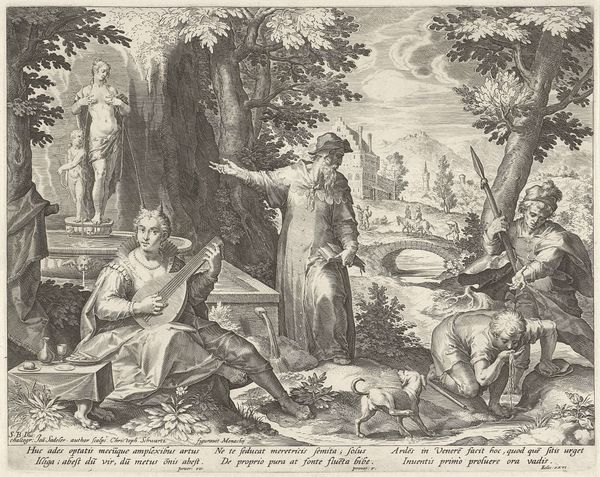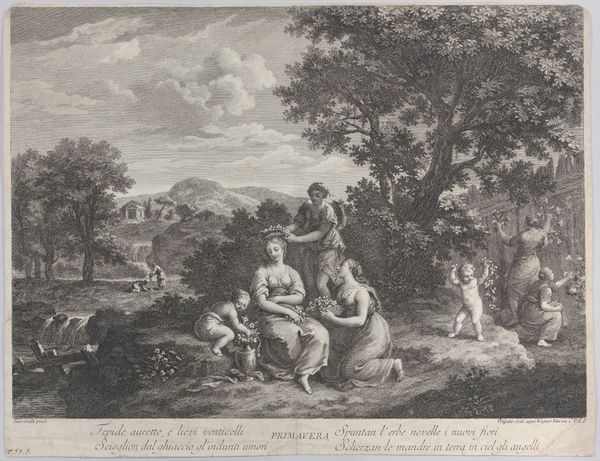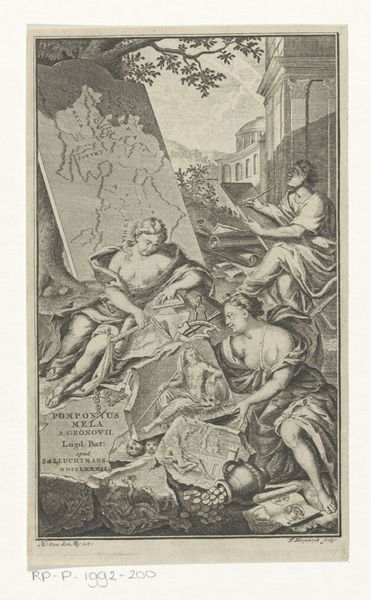
print, engraving
#
baroque
# print
#
landscape
#
figuration
#
history-painting
#
engraving
Dimensions: plate: 18.5 x 26 cm (7 5/16 x 10 1/4 in.) sheet: 19.6 x 28 cm (7 11/16 x 11 in.)
Copyright: National Gallery of Art: CC0 1.0
Editor: Hendrick Goltzius's engraving, "Juno in the Form of Beroe, Warning Semele," made around 1615, is striking in its classical formality and rather bleak tone. The rigid garden feels less like a welcoming space and more like a stage. How do you read the socio-political implications within this staged landscape? Curator: That's an interesting observation. The controlled nature of the garden does suggest a societal order, doesn't it? In examining this work within its historical context, consider the role of gardens themselves in the early 17th century. They were displays of wealth, power, and control over nature, signaling one’s status. The formality here echoes the rigid social hierarchies of the time. Given this was a print, meant for wider circulation, how might this depiction of a mythological scene also serve to reinforce or perhaps even subtly critique contemporary power structures? Editor: I hadn't thought about it that way. So, the mythological narrative intersects with societal commentary? Curator: Precisely. Juno’s warning to Semele hints at potential consequences for transgressing those societal boundaries. And given that Goltzius and his circle were based in Haarlem, a center of humanist thought, the choice to represent this story with such visual severity speaks volumes about the social anxieties surrounding ambition and transgression. Does the composition—the sharp architectural lines versus the curves of the figures—tell you anything? Editor: The contrast is very stark. The architecture seems to weigh down the scene. Is Goltzius perhaps suggesting the weight of societal expectation on individuals? Curator: Absolutely! And remember, prints like this were often disseminated with accompanying text or moralizing poems. These visuals weren’t just decorative; they were tools for reinforcing cultural norms. What have you noticed in the landscape background itself, for example? How does this contrast or work with the figures in the foreground? Editor: Well, the very structured garden seems very separate from the more ominous background landscape, almost unnatural… It brings a new layer of interpretation, hinting perhaps at an inability to truly control nature or fate, despite appearances. Curator: Indeed. The dialogue between classical mythology, social hierarchy, and individual fate seems to be the artwork's enduring resonance.
Comments
No comments
Be the first to comment and join the conversation on the ultimate creative platform.

